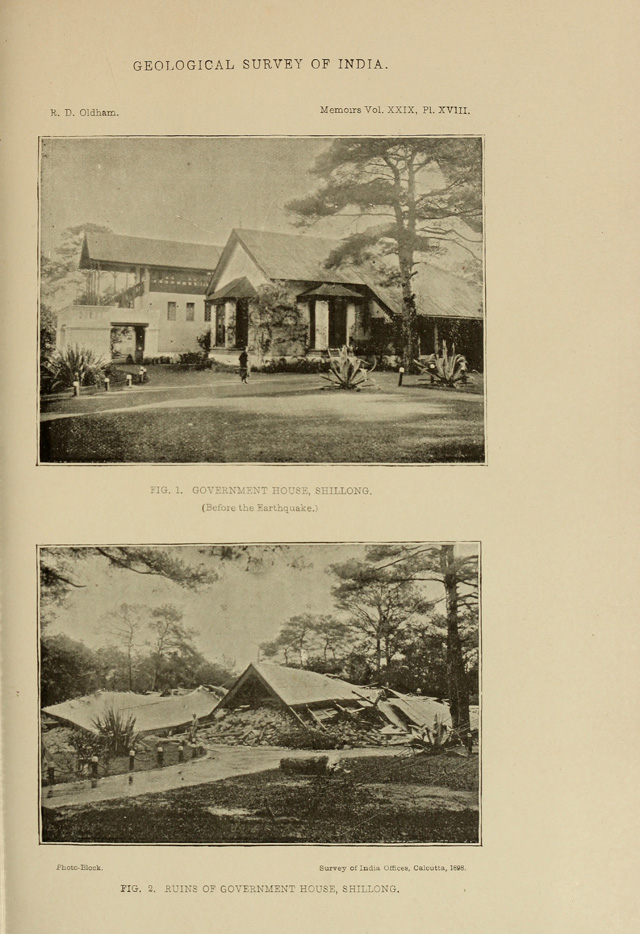19 November 2021–With data unearthed from seismic stations, observatories and libraries across the world, researchers have pinpointed the location of a massive earthquake that took place in India 125 years ago—one of the largest intraplate earthquakes known to history.
The magnitude 8 Great 1897 Shillong Plateau earthquake, sometimes called the Assam earthquake, ruptured in the region nestled between the Eastern Himalaya and the Indo-Burman Ranges, at a time when few seismometers were operating worldwide. The earthquake caused thousands of deaths and widespread damage to buildings across the area. The earth was upthrust by up to 11 meters (35 feet) along the Shillong Plateau.
The lack of instrumental data made it difficult to determine its exact location, but the new study published in The Seismic Record concludes the epicenter was at the intersection of the surface-rupturing short Chedrang Fault, and the buried long Oldham Fault proposed earlier by geodetic modeling. The rupture probably propagated eastward, and caused stress changes that may have later triggered the magnitude 7.1 Dhubri earthquake in 1930, according to Shiba Subedi and György Hetényi of the University of Lausanne in Switzerland.
The Oldham fault is named after Richard Dixon Oldham, the Geological Survey of India scientist who wrote a seminal monograph about the event. His observations from the great earthquake were the first clear identification of different arrival times for different seismic waves—the P-, S- and surface waves that form the backbone of modern seismological research.
Locating the epicenter of the infamous earthquake can aid in understanding how earthquakes might rupture in this region of complex deformation and multiple faults, the researchers said. By demonstrating that the epicenter does include a major fault without surface rupture, Hetényi said, the findings can inform future seismic hazard assessments to “include both faults visible at the surface and hidden faults with documented active or historical seismicity.”

Aided by a historian who specializes in seismology, Subedi and Hetényi went on a treasure hunt to find books, reports, and lists from early seismological stations around the globe. In one case, the researchers received an interlibrary loan of a Japanese seismic catalog that was so fragile that Hetényi had to read it wearing gloves. They were also the first to open some of the pages of the well-preserved copy of Oldham’s monograph that they used, in the geosciences library at the University of Lausanne.
The hunt turned up P- and S- wave arrival time data from 32 stations. Data from an additional 28 stations that may have been able to shed further light on arrival times were missing records or in some cases found to have been changing their paper on the seismograph at the time of the earthquake, the researchers learned.
Body wave arrival times at regional distances came from Oldham’s monograph. Oldham compiled these data from reports from train station masters across India, who felt the waves or had clocks stop as a result of the earthquake. In their analysis, Subedi and Hetényi used arrival times determined from data collected on the East Indian Railway that ran between Calcutta and Delhi, which Oldham called “the busiest, and by common sense best managed line in India.”
“Overall, the research process was interesting, time consuming, and also iterative,” said Hetényi. “I think we have exploited the great majority of what we could, and that there can only be very little data we may have missed.”
